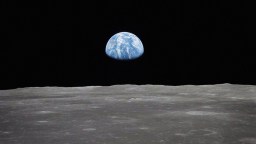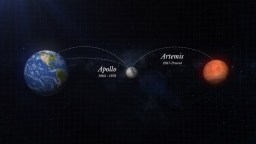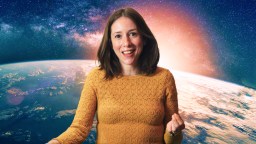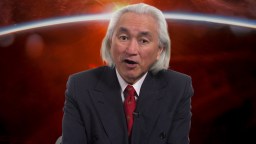It costs about $10,000 per pound, to put a person into orbit and $1,000,000 per pound to send a person to Mars. That’s a lot of money, especially in these current times of economic austerity. So how are we going to explore space and build an insurance policy, so to speak, to save Earth from global warming? The acclaimed theoretical physicist Michio Kaku says that help could come not from NASA alone but with help from the private sector. Specifically, he posits that inventor, free-thinker, and all-around Silicon Valley disruptor Elon Musk “has the vision, the energy, and the checkbook” to turn these seemingly far-out ideas into a reality. Michio’s latest book is The Future of Humanity: Terraforming Mars, Interstellar Travel, Immortality, and Our Destiny Beyond Earth.
Michio Kaku: We are entering what I call the next golden era of space exploration. The first golden era was back in the 1960s, but it was unsustainable. In 1966 the NASA budget consumed five percent of the entire federal budget! It was impossible to sustain that level of spending; now it’s about .5 percent.
However, now with the injection of new ideas, fresh enthusiasm from the private sector, from Silicon Valley billionaires, have a whole new different landscape. Just recently we had that sensational launch of the Falcon Heavy rocket financed by zero, zero amount of taxpayer’s dollars.
And it shows you that the economics have changed.
And now with the introduction of reusable rocket we’re now talking about opening up the heavens to perhaps a whole new economic landscape that is ten percent the cost of the past. To put me in orbit around the earth costs about $10,000 a pound; that’s my weight in gold. Think of my body made out of solid gold, that’s what it takes me just to go around the earth in near orbit. To go to the moon would cost about $100,000 a pound. To put me on Mars would cost at least a million dollars a pound. That is unsustainable and that’s where the reusable rockets come in because we’re now talking about dropping the cost by a factor of ten.
Instead of $10,000 a pound, SpaceX wants to bring it down to $1000 a pound. December of 2019 NASA will send the LSL booster rocket and the Orion Module around the moon on a robotic unmanned mission; just a few years after that the first astronauts will go back to the moon after a 50-year gap.
Late in the next decade we hope to have a lunar orbiter, a lunar orbiter that gives us a permanent presence in outer space. Not just the space station, but a lunar orbiter. And from that we want to go all the way to Mars.
And so NASA has already now looked at the blueprints, made by Boeing aircraft, concerning what it would take to send probes to Mars. In fact, we may even have a traffic accident around Mars because of the fact that SpaceX, not to be outdone, they’re proposing their big rocket to take us not just to the moon with the Dragon space capsule and the Falcon Heavy rocket, but a new rocket, the BFR rocket, to take us all the way to Mars—even bypassing the lunar orbiter. So we’re talking about a whole new political and technological landscape that, by the 2030s, sometime in the 2030s we will be on Mars.
We have not just new energy and new financing and money coming from Silicon Valley, we also have a new vision emerging. For Elon Musk of SpaceX is to create a multi planet species. However, for Jeff Bezos of Amazon, he wants to make earth into a park so that all the heavy industries, all the pollution goes into outer space and Jeff Bezos wants to set an Amazon type delivery system connecting the earth to the moon. And so he wants to lift all the heavy industries off the planet earth to make earth a paradise and to put all the heavy industries in outer space. Now, I once talked to Carl Sagan and he said that because the earth is in the middle of a shooting gallery of asteroids and comets and meteors it’s inevitable that we will be hit with a planet buster, something like what hit the dinosaur 65 million years ago. We need an “insurance policy.” Now, he was clear to say that we’re not talking about moving the population of the earth into outer space, that costs too much money and we have problems of our own on the earth like global warming. We have to deal with those problems on the earth, not fleeing in outer space. But as an insurance policy we have to make sure that humans become a two planet species. These are the words of Carl Sagan.
And now, of course, Elon Musk has revived this vision by talking about a multi planet species. He wants to put up to a million colonists on the planet Mars sent to Mars by his rockets financed by a combination of public and private funding. And remember he has the vision, the energy and the checkbook to make many of these ideas into a reality.






